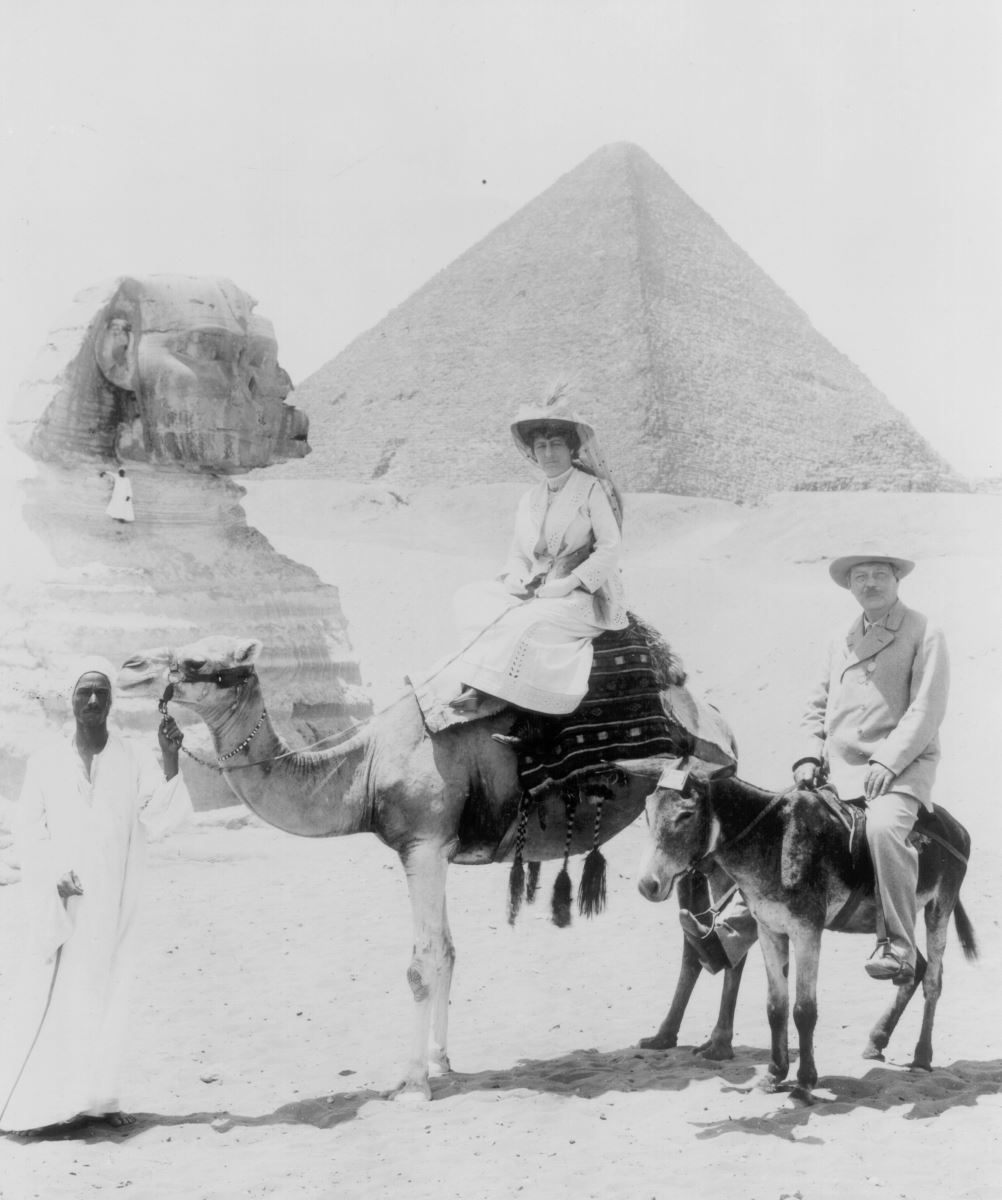Conan Doyle And King Tut.
In November 1922, the Egyptologist Howard Carter discovered the tomb of the Pharaoh Tutankhamen. The fabulous treasures that were unearthed from the tomb captured the collective imagination of the world.
Newspaper reporters clamoured for a story. However, the financial backer of Howard Carter’s excavation - George Herbert, the 5th Earl of Carnarvon - signed an exclusive contract worth £5,000 with the London Times.
This led to some rather suspect reports and stories, as other newspapers scrambled to produce copy for their readers. These included a so-called ‘ curse ‘ that would be visited on those who had broken into Tutankhamen’s tomb.
The Earl of Carnarvon died aged just 56 in Cairo on 5 April, 1923. The cause of death was septicaemia ( blood poisoning ) followed by pneumonia. This occurred after the Earl of Carnarvon had nicked a mosquito bite with his cut-throat razor.
Newspapers reported that the Earl of Carnarvon’s pet dog howled and dropped dead at the family home in Highclere Castle, England - supposedly at the very moment of the Earl’s demise. All the lights in Cairo were also said to have gone out for 20 minutes.
On that same day Sir Arthur Conan Doyle was being interviewed by a journalist from the Times. The reporter mentioned the death of the Earl of Carnarvon to Conan Doyle. Sir Arthur Conan Doyle then gave his own unorthodox views on the Earl’s death. He stated that it was possibly due to ‘ curses ‘ or ‘ elementals. ‘ These primitive spirits, according to Conan Doyle, were invoked by Ancient Egyptian priests to guard the tomb of King Tutankhamen.
“ There are many tales about the powers of the old Egyptians, “ Conan Doyle added darkly, “ and I know I wouldn’t care to go fooling about their tombs and relics. There are many malevolent spirits. “
The views of such a famous figure as Sir Arthur Conan Doyle helped to make the story a sensation all over the world.
In that same year, Sir Arthur Conan Doyle once again voiced his views on the mysteries of Ancient Egypt. On this occasion it concerned the premature death of his friend, Bertram Fletcher Robinson.
Bertram Fletcher Robinson was a respected journalist and editor, who worked for many of the leading periodicals and newspapers of the day.
In 1904, he began to study the so-called “ Unlucky Mummy “ in the British Museum. His aim was to write some articles on it for the Daily Express.
The “ Unlucky Mummy “ is actually a ‘ mummy-board, ‘ ( an inner coffin lid. ) It has been in the British Museum since 1889. Catalogued as a “ painted mummy-board of an unidentified woman, “ it has been blamed for many personal and national disasters.
Bertram Fletcher Robinson seems to have been convinced that the “ Unlucky Mummy “ had malevolent powers. In a front-page article in the Daily Express entitled ‘ A Priestess of Death, ‘ Fletcher Robinson wrote that, “ It is certain that the Egyptians had powers which we in the 20th century may laugh at, yet can never understand. “
In 1907, Bertram Fletcher Robinson died of typhoid. He was just 36 years old. Sir Arthur Conan Doyle had his own opinion on the early demise of his friend, “ Then he was overtaken by illness. The immediate cause of his death was typhoid fever, but that is the way in which the ‘ elementals ‘ ( curses ) guarding the mummy might act. “
Heavens above, it all seems a long way from the cool, rational figure of Sherlock Holmes ! Yet Holmes’ creator Sir Arthur Conan Doyle was a paradox, and a paradox fascinates us all.
END.

Related
Comments
Comments are disabled for this post.

 to add an item to your Itinerary basket.
to add an item to your Itinerary basket.





